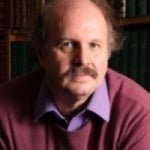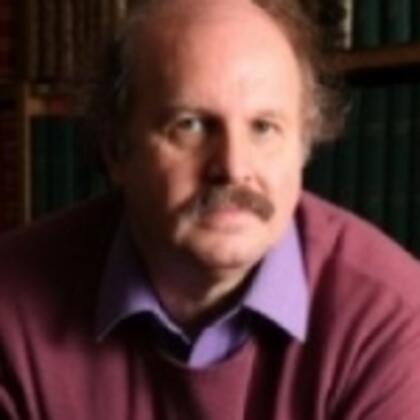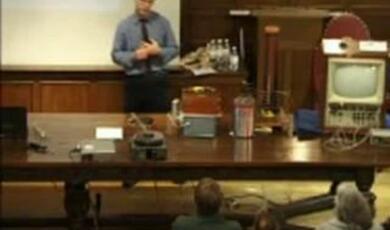Safety at Sea and Lighthouses
Share
- Details
- Text
- Audio
- Downloads
- Extra Reading
The Brethren of Trinity House have been responsible for safety around our shores for five hundred years. Michael Faraday made a major contribution to the effectiveness of lighthouses that has lasted to this day. How are mariners and their cargoes kept safe and what is the significance of the role of the expert in providing advice to the state and its agencies?
Download Text
08 June 2015
Safety at Sea and Lighthouses
Professor Frank James
By 1900, the entire coastline of Britain and Ireland was covered by a series of overlapping beams of light emitted by a highly engineered chain of lighthouses, beacons and lightships. The lighthouse service a century before had covered much less of the coast, was labour intensive and nowhere near as sophisticated as it became by the end of the nineteenth century. The precise mechanisms through which this change came about have yet to be properly elicited, so this talk will be concerned with outlining some of the key episodes in the lighthouse politics and lighthouse engineering practice during the nineteenth century.
Unlike France, say, the lighthouse service on these islands in the nineteenth century was not a direct department of state, but comprised three authorities: the Corporation of the Elder Brethren of Trinity House (covering England, Wales and the Channel Islands), the Northern Lighthouse Board (Scotland and the Isle of Man) and the Commissioners of Irish Lights. In addition throughout the nineteenth century the Board of Trade (which had responsibility for colonial lights) sought to bring the three authorities under direct government control. However, all the Board was able to do was to increase its supervisory role and the administrative structure of today’s lighthouse service remains much the same. (Trinity House and the Northern Lighthouse Board, which is not a devolved function, report to the Department for Transport, while the Irish Commission is a cross boarder authority). Trinity House received its charter from Henry VIII in 1514 and from 1796 its headquarters has been on Trinity Square, near the Tower of London. In the nineteenth century, Trinity House was governed by a Master (a figurehead) and a Court of 31 Elder Brethren, mostly merchant navy officers. Executive responsibility lay with the Deputy Master, the Secretary (an employee) and three committees – By Board, Wardens and Lights. Both the Northern Lighthouse Board and the Irish Commissioners for Lights had been founded in 1786, but in this talk I will be dealing mostly with Trinity House.
Trinity House earned much of its income from light dues that were collected when ships passing their lights entered harbour. It appears that this income was not sufficient for the Corporation’s immediate purposes as they had considerable charitable functions to discharge. So during the late eighteenth and early nineteenth century they leased a number of lighthouses to various individuals who were then paid the income from the light dues. For example the Smalls lighthouse off the Pembrokeshire coast produced an annual income of just over £12,000 for its lessee in the early 1830s. This practice attracted the interest of the select committee on lighthouses of the House of Commons established in 1834 under the government led by the Whig 2nd Earl Grey who had seen the 1832 reform act through Parliament. The committee chaired by the radical MP Joseph Hume was scathing in its criticisms of Trinity House. Indeed the Deputy Master John Woolmore did not give evidence and resigned in May 1834; his successor, John Pelly, had given already evidence to the committee. The committee provided detailed analyses of the income that the private lighthouse owners earned, which resulted in an act of Parliament authorising Trinity House to purchase, compulsorily if necessary, the leases (with money from the Treasury which eventually totalled £1,182,546).
The committee also took evidence from the inventor of the oxy-hydrogen lamp, Goldsworthy Gurney, and the Royal Engineering officer, Thomas Drummond, who had used the lamp extensively in his work for the Ordnance Survey of Ireland. Drummond was also closely connected with the Whigs (the following year he would become Irish under-secretary) and his response to a question from the committee (which must have been arranged beforehand) allowed it to recommend:
that all the Public General Lighthouses … should be placed under one Board, resident in London and conducted under one system of management. … Captain Drummond recommends a Board consisting of Four Persons; one to be a Seaman, and the Hydrographer of the Admiralty; another to be a scientific Chemist; a third a Member of the Royal Society [of London] and an Optician; and the fourth, the President or Vice-President of the Board of Trade.
Drummond had attended the lectures of Michael Faraday, Director of the Laboratory at the Royal Institution, and in 1826 Faraday had there delivered a lecture on Drummond’s light, which included discussion of its possible lighthouse use. It would thus seems likely that when Drummond suggested that one of the members of the proposed new lighthouse board should be ‘a scientific chemist’, he had Faraday specifically in mind.
While the committee’s specific recommendations were not implemented and direct government involvement remained limited (despite the enormous Treasury subsidy), Pelly took the hint and in 1836 visited Faraday at the Royal Institution to invite him to be the first scientific adviser to the Corporation. After a bit of discussion, Faraday was employed, at an annual income of £200, as ‘Scientific adviser in experiments on Lights to the Corporation’ of Trinity House and in the 1850s he was also appointed to a similar position at the Board of Trade. He retained both positions until his death in 1867, though towards the end his duties were taken over by his successor at the Royal Institution, John Tyndall. Thus began Faraday’s most significant contribution to the application of science for practical purposes. An indication of its extent may be gained from the statistic that after 1836 over 17% of his extant correspondence deals with lighthouse matters.
The reference in the select committee’s report to the need for a scientific chemist and Faraday’s appointment is evidence that Trinity House was well aware that they were technically behind the French lighthouse service. At the start of the nineteenth century many lighthouse establishments, for example St Catherine’s Point on the southern tip of the Isle of Wight and South Foreland on the Kent Coast, had two lighthouses (usually denominated upper and lower) each producing a constant beam. Mariners approaching those lighthouses would recognise their position, and thus hopefully avoid danger, from the relative alignment of the two light sources. One area where the French service was far ahead of Trinity House was in the deployment of Fresnel lenses which rendered the light rays parallel and thus increased beam intensity. Some of Faraday’s earliest work for the Corporation was checking the optical quality of lenses imported from France. This work was undertaken at Trinity Buoy Wharf at the entrance to the River Lee and in the 1850s a lighthouse was built there for Faraday’s work. One consequence of converting English lighthouses to Fresnel optics was that the Birmingham glass maker Chance bros, employing French glassmakers, began making glass of the quality needed for lighthouse purposes, a programme that Faraday oversaw.
Much of Faraday’s work for Trinity House was mundane such as analysing waters and ensuring that the red and white lead needed to paint lighthouses was free from adulteration. Thus Faraday became involved in almost every area of lighthouse engineering, such as examining wicks and fuel, but he also played a key role in developing novel lighthouse technology. During the 1840s his efforts for Trinity House were directed towards the problem of lighthouse ventilation. He commenced investigating this in February 1841 following a visit to St Catherine’s Lighthouse. Faraday’s problem was finding a way of removing from the lighthouse lanthorn the products of combustion from the oil lamps that condensed on the outer glass which thus dimmed the brightness of the light. He developed a chimney which carried away these products without reducing the intensity of the light. In this the products of combustion went up the inner cylinder of a double glass chimney and by a siphon effect were drawn down the space between the inner and outer cylinders and exhausted outside the lanthorn. First installed in St Catherine’s Lighthouse it proved, judging by the graphic description provided by the keeper two years later, very successful. In 1842 Faraday made over the chimney to his brother, Robert, who had become a gas lighting contractor. He patented it the following year; Faraday’s only patented invention. The chimney was successful and it was installed in other buildings including the Athenaeum and Buckingham Palace where, as The Times noted, Faraday’s lamp illuminated Princess Helena’s Christening.
Faraday also oversaw the first practical use of electrical light. It seems extraordinary, in retrospect, that the initial utilisation of electricity for power (as opposed to communication) should be located in lighthouses which are generally inaccessible and frequently subject to inclement weather. There were two major schemes proposed, one by a Dr Watson and the other by a Mr Holmes.
Joseph Watson’s November 1852 proposal basically involved passing an electric current from a battery across a carbon arc. In such cases Faraday always insisted that the apparatus should be as complete as possible before examination and Watson was not ready until July 1854. Tests were then undertaken and Faraday submitted a 4,200 word report to Trinity House. He began by discussing the positive aspects of the light, noting that it would shine for more than eight hours a day for five days; that the light was brighter than current sources of illumination; and that the carbon rods could be changed in less than a second. The problem, he pointed out, was that to keep the cost of the light to a minimum (always a major concern to Trinity House), the chemical products produced by the battery would have to be collected and sold. In turn this would mean building a large battery room at some distance from each lighthouse to avoid the fumes produced by nitric acid (this problem had caused one man at the test to spit blood resulting in Faraday suspending it). Furthermore, accommodation would have to be provided for the three battery men required. Faraday pointed out the problems that would arise by having two sets of employees working at a lighthouse; otherwise Trinity House would need to become a manufacturing and commercial body. He also, more technically, noted that the light flickered too much and that its maintenance required skills and aptitude which lighthouse keepers did not possess. The result of this report was Trinity House decided not even to trial Watson’s light.
Three years later, in 1857, Frederick Holmes proposed another method of electrifying lighthouses. Instead of using batteries to power the carbon arc he proposed using a magneto-electric generator (driven by a steam engine) based on Faraday’s 1831 discovery of electro-magnetic induction. Faraday’s first report, in April 1857, was fairly positive and asked a series of questions which Holmes answered sufficiently satisfactorily that Faraday recommended that his method should be properly trialled and Trinity House agreed to contribute towards the costs. During 1858 Holmes installed his light in the South Foreland Lighthouse and on 8 December electric light, with Faraday present, first shone across the English Channel. Thereafter Faraday visited South Foreland regularly and his commitment is shown by a visit on 13 February 1860 when he was snowed up and could not reach the lighthouse. At the second attempt, four days later, ‘by climbing over hedges, walls, and fields’ he finally visited the lighthouse. Faraday attended the meeting at Trinity House to discuss the results of the trial and it was agreed that it should be trialled in a revolving light. Electric lights were subsequently installed at Dungeness, Souter Point (County Durham) and perhaps elsewhere, but eventually the technical problems involved proved too great and the electrification programme was abandoned until the 1920s. By then the incandescent light bulb, invented by Joseph Swan, and the central generation of electricity made electrification a practical proposition.
Trinity House attracted proposals by Watson, Holmes and others because the Corporation had the material resources to test them. Although Faraday’s role was officially to comment on ideas put to Trinity House, it is hard to imagine that Holmes’s light would have got as far as it did without Faraday’s active backing. Faraday’s extensive work for Trinity House was not just about earning extra money or putting science to practical use but had, for him, a deeply moral purpose. His view of moral responsibility that the practitioners of science and engineering should have towards the demands of society and the state were neatly encapsulated by him at the start of an 1860 lecture:
The use of light to guide the mariner as he approaches land, or passes through intricate channels, has, with the advance of society and its ever increasing interests, caused such a necessity for means more and more perfect, as to tax to the utmost the powers of both the philosopher and the practical man, in the development of the principles concerned, and their efficient application.
But, Faraday belonged to the Sandemanian church (a small neo-Calvinist sect) and so he linked all this together theologically. In the conclusion to his report on Watson’s light, Faraday commented:
Much, therefore, as I desire to see the Electric light made available in lighthouses, I cannot recommend its adoption under present circumstances. There is no human arrangement that requires more regularity and certainty of service than a lighthouse. It is trusted by the Mariner as if it were a law of nature; and as the Sun sets so he expects that, with the same certainty, the lights will appear.
Aside from the poetic imagery of this passage, the striking comparison that Faraday drew between the laws of nature (which God had written into nature at the Creation) and a human technology, emphasises the moral seriousness with which Faraday regarded his lighthouse work and thus justified the amount of time he devoted to it.
© Professor Frank James, 2015
Further reading:
Julia M.H. Elton, ‘A Light to lighten our darkness: lighthouse optics and the later development of Fresnel’s revolutionary refracting lens 1780-1900’, The International Journal for the History of Engineering and Technology, 2009, 79: 183-244.
Frank A.J.L. James, ‘‘the civil-engineer’s talent’: Michael Faraday, science, engineering and the English lighthouse service, 1836-1865’, Transactions of the Newcomen Society, 1999: 70: 153-60.
Frank A.J.L. James, ‘Michael Faraday and Lighthouses’, in Ian Inkster, Colin Griffin, Jeff Hill and Judith Rowbotham (editors), The Golden Age: Essays in British Social and Economic History, 1850-1870, Aldershot, 2000, pp.92-104.
This event was on Mon, 08 Jun 2015
Support Gresham
Gresham College has offered an outstanding education to the public free of charge for over 400 years. Today, Gresham College plays an important role in fostering a love of learning and a greater understanding of ourselves and the world around us. Your donation will help to widen our reach and to broaden our audience, allowing more people to benefit from a high-quality education from some of the brightest minds.


 Login
Login







